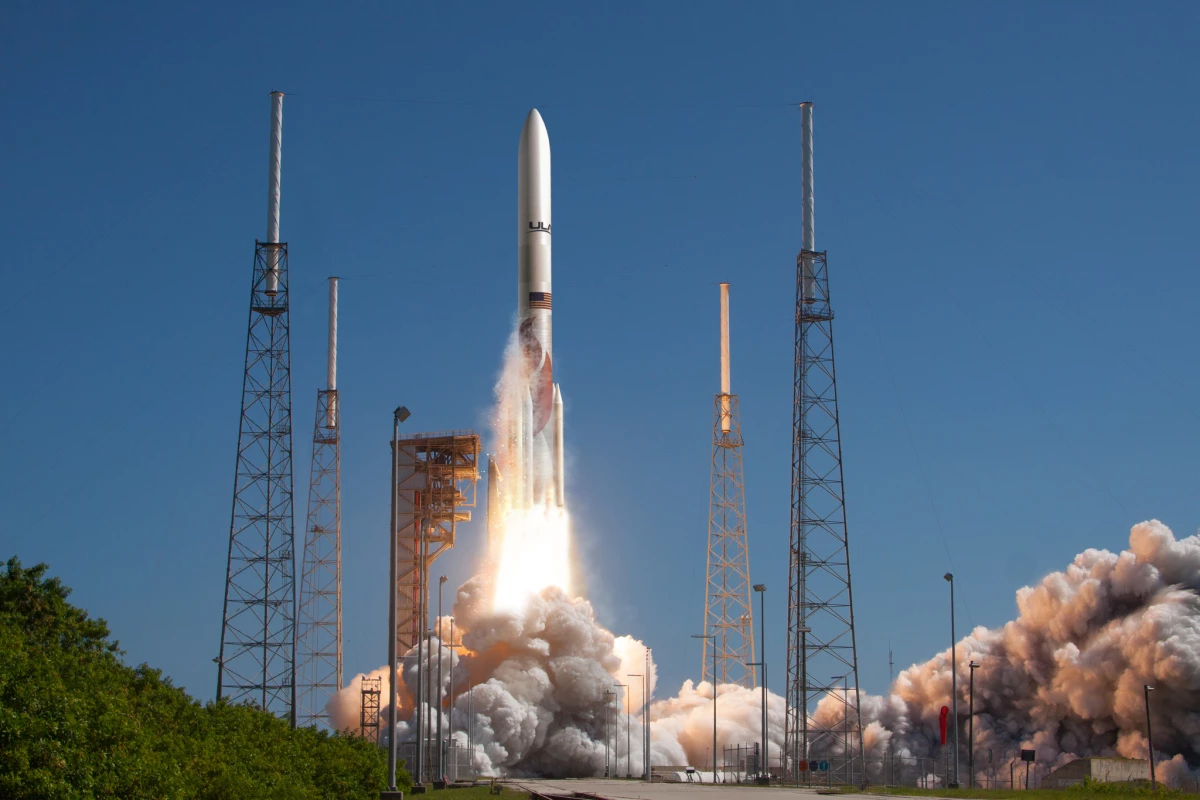When the first US Moon landing mission since Apollo lifts off tomorrow, it will be launched into space by a new generation of rockets called Vulcan, which are powered by two methane engines and the longest single-segment solid rocket booster ever built.
The Astrobiotics's Peregrine mission seems to be piling up a load of newsworthy items before it even leaves the ground. It's not only the first US lunar landing mission in over half a century, it will also be the first American lunar mission using a privately owned and operated spacecraft, and it will deploy the first American lunar rover.
Now, to this list can be added the maiden flight of United Launch Alliance's (ULA) first Vulcan/Centaur rocket, which replaces the venerable Atlas V that was retired in October 2023.
Based on both the Atlas V and Delta IV rockets, the Vulcan/Centaur is larger than either and can lift heavier payloads in its 17.7-ft-wide (5.4-m) payload fairing made of a sandwich composite structure. Its development history has been a long and complicated one marked by various delays combined with an imperative to replace the Atlas V, which was retired because the Russian-built engines that powered it were unavailable after Russia's invasion of Ukraine in 2022.

The upper stage of the launcher is an upgraded Centaur rocket, which is fueled by liquid hydrogen and oxygen powering RL10CX engines with fixed nozzle extensions. Meanwhile, the Vulcan first stage uses a pair of BE-4 engines built by Blue Origin that burn liquid natural gas and oxygen and produce 1.1 million lb of thrust. Because natural gas is less energy dense than hydrogen, the Vulcan has to carry much larger fuel tanks than the Atlas V. When carrying very large payloads, the Vulcan/Centaur can stand as high as 221 ft (67.4 m).
In addition, the Vulcan incorporates Northrop Grumman's 63-in (160-cm) diameter, extended length Graphite Epoxy Motor (GEM 63XL) solid rocket booster (SRB) that will also be flying for the first time. According to the company, the 72-ft-long (22-m) fifth-generation GM 63 XL is the longest monolithic SRB ever produced for flight. There have been larger and longer engines, but these have been built in sections that were bolted together.

The solid boosters are added to the Vulcan core first stage in pairs up to six to provide additional thrust at liftoff for a total of up to 3.3 million lb. This allows the Vulcan/Centaur to place payloads of up to 60,000 lb (27,200 kg) into low Earth orbit and 32,000 lb (4,500 kg) into geosynchronous transfer orbit. Smaller payloads can be placed on interplanetary trajectories and even sent out of the solar system.
Tomorrow's launch will be from Space Launch Complex-41 at Cape Canaveral Space Force Station in Florida, but the Vulcan/Centaur can also launch from Space Launch Complex-3 at Vandenberg Space Force Base in California.
The video below introduces the ULA Vulcan.
Sources: ULA, Northrop Grumman







